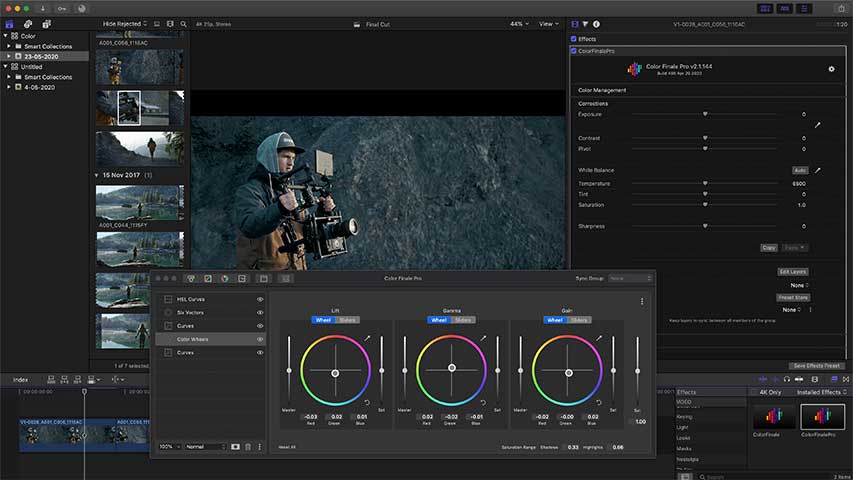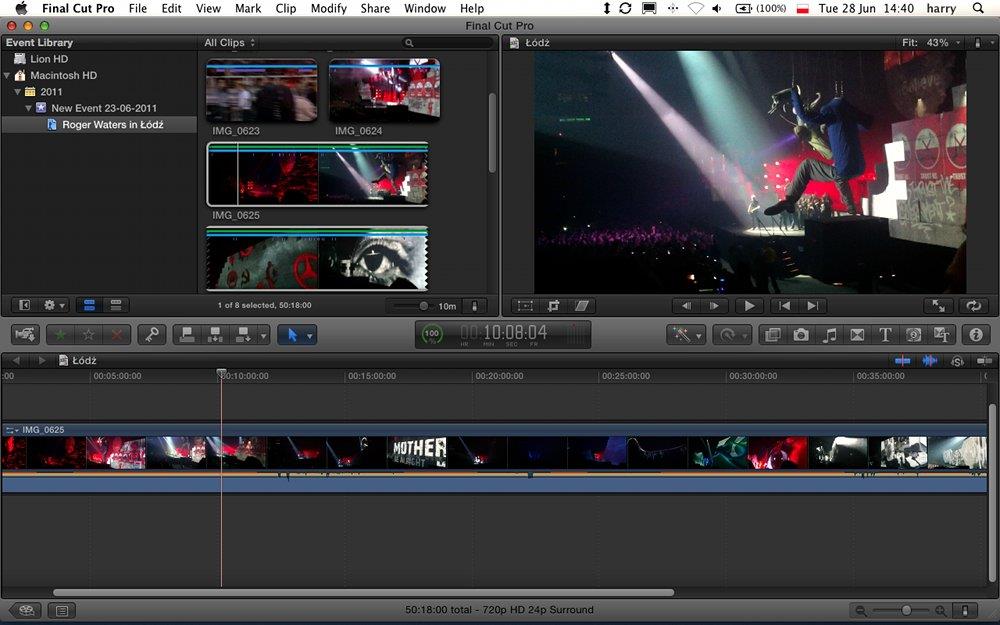

Inside the color inspector, you can decide how your color wheels are displayed. Then select “Color Wheels” to add a color wheels correction. In the drop-down menu where it says “No Corrections,” click the arrow just next to it to activate the drop-down menu. To apply them, select a clip in the timeline then press cmd + 6 to go to the color inspector. If you came from FCP 7 (or any other traditional NLE), you’ll feel right at home with color wheels.

I’ve included a link to a video describing the above and more in how you can set up keyboard shortcuts for faster color grading.
#COLOR FINALE FINAL CUT PRO PRO#
Under Final Cut Pro > Preferences > Editing tab, you can change the default correction. Color Board is the default correction under the color inspector It’s currently set to color board but can be changed in preferences. But you can change the default color effect that shows up in the inspector when no corrections are applied. The default keyboard only has shortcuts for the color board as it’s assigned as the default effect.

Inside the color inspector is a drop-down that will display all the color corrections on a clip and the ability to add additional corrections.Ī much more effective way to add these effects would be to assign keyboard shortcuts to them. Two color effects have been added to the clip with Color Wheels selected.īesides adding color effects from the effects browser, you can add them directly in the color inspector. Whichever effect is selected in the video inspector represents the set of tools that will be displayed when the color inspector is activated. You can apply multiple color effects to a clip. The color inspector showing the tools for Hue/Saturation Curves Adding multiple effects You can adjust its controls in the new color inspector by pressing cmd + 6 or clicking the triangular Color Inspector icon. If you double-click any of these color effects, it will be applied to your selected clip and show up in the video inspector. There is also an effect that allows you to load Look-up Tables (aka LUTs.) In the Color category are the three new color effects that use the color correction tools: Color Wheels, Color Curves and Hue/Saturation Curves (Please note: the old Hue/Saturation effect does not give you access to the Hue/Saturation Curves in the Color Inspector). Select the clip you want to apply the effect to and press Cmd + 5 to bring up the effects browser. There are a few ways to add the new color grading effects to a clip. Finally, we will take a brief look at performing a color balance correction with an eyedropper along with your ability to now load custom LUTs inside of FCP X. I will also explain how you can optimize Final Cut to use them more efficiently. This article will take a look at these new additions and explain how you can use them with the help of existing color tools. The options you have for working with color have been vastly improved and expanded with the addition of color wheels, color curves and hue and saturation curves. If the changes for color could be summed up in one word, it would be flexibility. The most significant changes all had to do with color. Now flash forward to December 14th, 2017 when Apple released Final Cut Pro X version 10.4. While the color board is not a bad way to interact with a color, it didn’t follow the established color grading paradigms.Īnother issue was your inability to keyframe a correction (although there was a way to cheat this by blading a clip and dissolving between 2 corrections). There were pucks assigned to Highlights, Midtones, and Shadows that you could move up or down to adjust color, saturation, or exposure as needed. Instead of the traditional color wheels, the color board represented the same information in a flat, horizontal field.
#COLOR FINALE FINAL CUT PRO PROFESSIONAL#
A big problem with the color board was if you came from Final Cut Pro 7, had a background in photo editing software, or were familiar with professional color correction applications, the color board was quite foreign to you. The color board was initially built into a video clip, and by moving through various panes you could adjust the exposure, saturation and color of an image. Since its inception, Final Cut allowed you to color correct using a tool called the color board. Beyond the Color Boardįinal Cut Pro X has not been a stranger to color grading. I’m going to walk you through the new tools and show you just how cool they are. With FCP X 10.4, you can do more with color grading (and do it more quickly and intuitively) than ever before. With the popularity of flat image profiles and the advent of HDR workflows on the horizon, color grading inside your NLE is more important than ever.


 0 kommentar(er)
0 kommentar(er)
